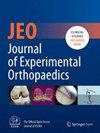Low lateral inclination angle, high sulcus angle, high trochlear height and patella alta are risk factors for first lateral patellar dislocation and complete MPFL rupture, comparative study
Abstract
Purpose
To identify risk factors for complete medial patello-femoral ligament (MPFL) rupture after first lateral patellar dislocation (LPD) and to develop a model to predict the risk of rupture.
Methods
Patients who presented with first LPD between February 2019 and June 2024 and were diagnosed with complete MPFL rupture on magnetic resonance imaging (MRI) were retrospectively reviewed. Patients with normal MRI findings in a 1:1 ratio were selected as the control group by computer-assisted randomisation.All patients in both groups were asked to perform MRI on, tibial tuberosity–trochlear groove (TT–TG) distance, lateral trochlear inclination (LTI) angle, sulcus angle (SA), medial femoral condyle height (MFCH), lateral femoral condyle height (LFCH), trochlear height (TH), patellotrochlear index (PTI), Koshino–Sugimoto Index (KSI), Caton–Deschamps Index (CDI) and Insall–Salvati Index (ISI) were measured and recorded. All measurements were made by two different orthopaedists and intra-observer reliability was evaluated. The measurements between the groups were compared statistically.
Result
A total of 98 patients, including 49 patients with complete MPFL rupture (study group) and 49 patients in the control group, were included in the study. Thirty of the patients in both groups were males and 19 were females. Mean age was 23.55 years in the study group and 24.29 years in the control group (p = 0.447). Satisfactory ICC scores were obtained in all measurements. LTI was lower in the study group than in the control group (p = 0.002), while SA was higher in the study group than in the control group. Both CDI and ISI were statistically significantly higher in the study group compared to the control group (p = 0.002, p = 0.003). The probability of predicting the risk of complete MPFL rupture of the risk analysis model created with radiological risk factors for complete MPFL rupture was 70.4%.
Conclusion
LTI, SA, TH and patella alta are risk factors for complete MPFL rupture after first LPD. Risk analysis of complete MPFL rupture after first dislocation can be successfully performed with MRI findings. This risk analysis can be used to predict the risk of developing complete MPFL after primary LPD, especially in risky patient groups, and can be used in a simple way to decide which patients will receive a preventive programme without the need for additional examination.
Level of Evidence
Level III, case–control study.


 求助内容:
求助内容: 应助结果提醒方式:
应助结果提醒方式:


